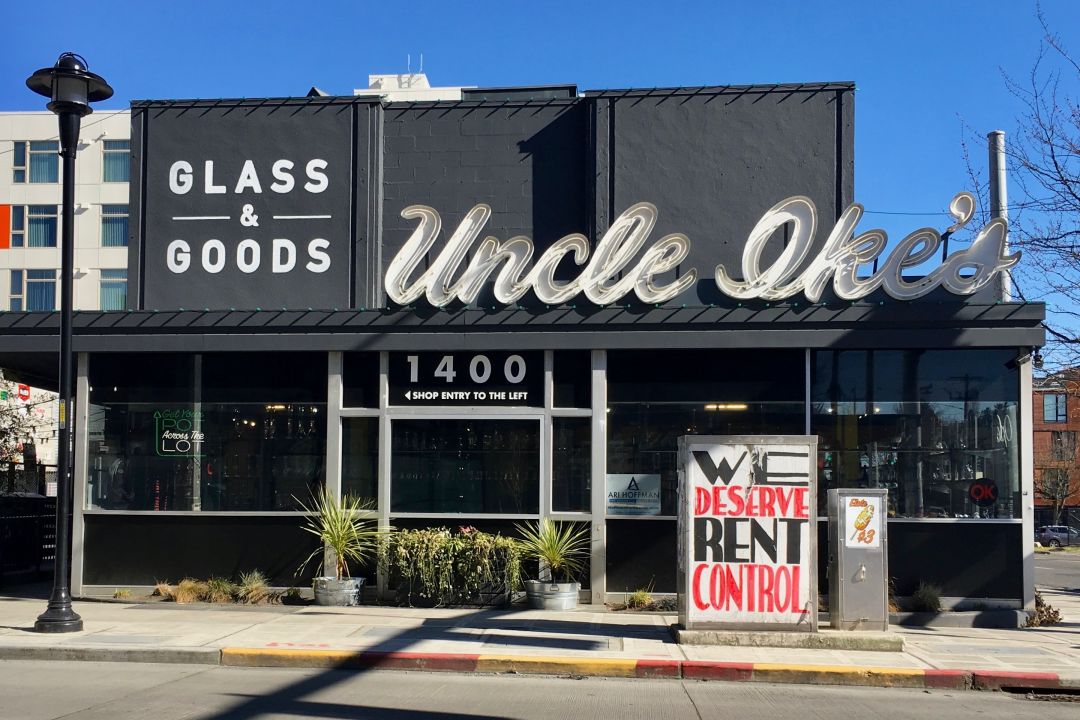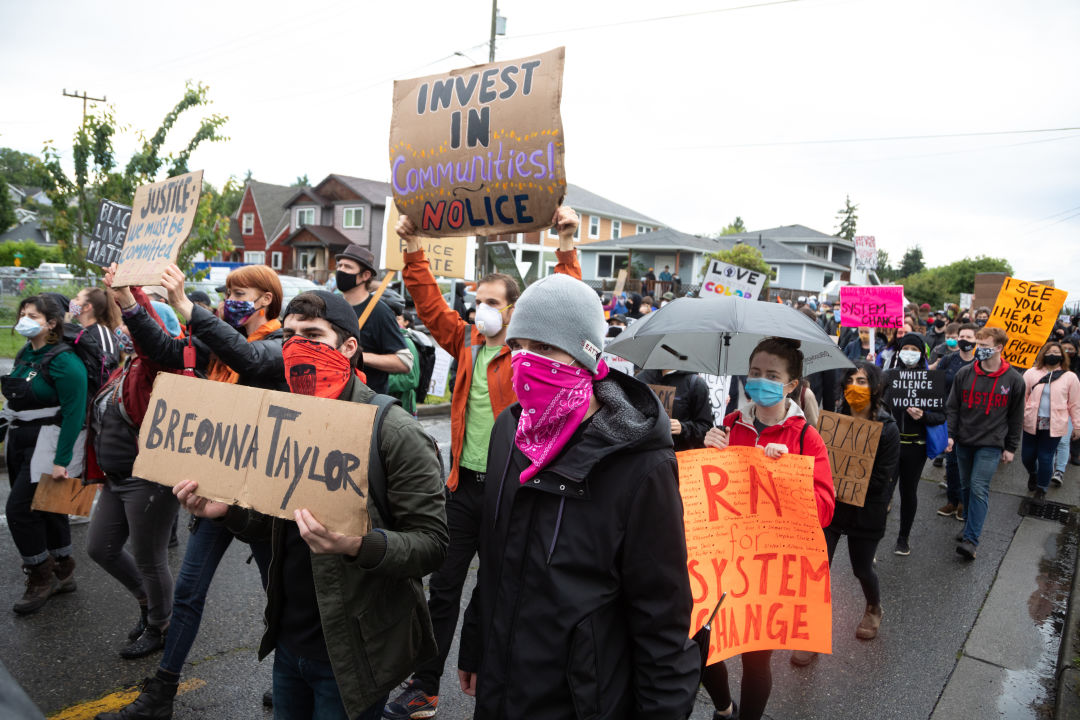Displaced from the Central District

Image: María Hergueta
The question wasn’t a question.
“Have you seen me a couple of times today?” Michael Morgan asked the supposedly incognito detective. Morgan had pulled his Civic in tight behind the unmarked car, to show the investigator that he already knew the answer. The quick, hard hello was part of Morgan’s playbook. He made a similar introduction three years before to a different cop in a different casino parking lot.
As a drug trafficker, Morgan was as good as one can be and still get caught. Those acquainted with his charisma and focus swear he could’ve thrived in business or law. But by that parking lot encounter in September 2017, Morgan was doomed. DEA wiretaps were up on networks he and his trafficking peer, Charles Cheatham, sustained over three decades. As the war on drugs flowed and ebbed, they moved millions of dollars in cocaine and heroin on the corners of Seattle’s Central District. Yet, to bring them down, police had to hit the suburbs.
Waves of gentrification had pushed longtime Central District residents out of this bastion of Black Seattle, a community historically home to some of the city’s cultural heavyweights. In the 2000s, developers flattened local institutions, making way for the glassy residential-over-retail, six-story towers. Today, 14 percent of the CD’s population is Black, down from 68 percent in 1970. “We’re refugees in our own city,” says Willard C. Jimerson Jr., a former CD resident who has managed youth programs for the Urban League. “We’ve been displaced.”

Uncle Ike’s pot shop at 23rd and East Union.
Image: Courtesy Marisa Gerard
In an irony that stings dislocated residents, one of the state’s busiest marijuana stores—Uncle Ike’s, white-owned like most businesses in the neighborhood these days—sits near the corner of 23rd Avenue and East Union Street, where countless Black boys and men were hauled off for dealing, or irreparably harmed in related violence, for decades. Demonstrators with Engage, a Black Lives Matter group that planned protests at Uncle Ike’s this summer and fall, continue to spotlight the lack of Black entrepreneurs benefiting from Washington’s $1 billion marijuana industry and educate Seattleites on gentrification. They’ve asked Ike’s owner Ian Eisenberg and other weed mavens to pay into a fund that would enable Black residents to open cannabis businesses and buy land in the CD, which one Engage organizer describes as “ground zero for Seattle gentrification.”
When money arrived in the Central District, people who shaped the neighborhood decamped for the suburbs, sent north and south of Seattle proper. A handful of men associated with area gangs left with them; even the drug dealers couldn’t afford to live there anymore. Cheatham uprooted to Fife, Morgan to Brier.
Police, who’d listened in to Cheatham, Morgan, and dozens of others for months, fanned out from Mount Vernon to Tumwater on June 6, 2018, to collect more than 40 runners and dealers, ex-CD residents now commuting to deal. Indictments followed. Cheatham and Morgan, both 43 then, prepared to enter their golden years in federal prison, having outlasted the community that raised them.
Cheatham and Morgan were born into Black Seattle’s hub at the beginning of its diffusion. Until Seattle’s segregationist rules lifted in the 1960s, neighborhoods east of Capitol Hill’s crest were the only areas near the city center open to Black residents. Black-owned businesses served Black families on block after 90-percent-Black block. Jimi Hendrix and Ray Charles called the CD home, as did Quincy Jones and his brother Richard, now a federal judge.

Activists protested the construction of a 50-unit condominium at 24th Avenue and East Yesler Way in 1981.
Economic racism—so pervasive that in 1970 five Seattle banks wouldn’t loan to a flourishing Black church—derailed CD residents’ efforts to set an anchor in the neighborhood. Instead of ownership and investment, the area got crack and a crackdown. By age nine, Morgan was handling drug deals as he and his mother bounced between homes and shelters. They piled their belongings on the curb of South Washington Street during one rushed exit. Morgan watched looters carry off their things, believing they were helping him move.
Cheatham had a rock in his grandmother, Ollie Belle Cheatham-Thomas, and her home on East Cherry Street. As Seattle Times columnist Jean Godden once quoted from Cheatham-Thomas’s 1996 obituary in homage: “If you were hungry, she fed you. If you were homeless, she gave you shelter.” Cheatham shared Ollie Belle’s home with as many as 20 relatives and friends.
As crime spiked in the CD, police targeted older players in the drug game, creating space for boys with little to lose. Boys like Morgan and Cheatham.
More than a decade since gentrification set in, the Central District still has cachet in gang circles. The gangs tied to Cheatham and Morgan—East Union Street Hustlers and Deuce-8, christened for the corner of 28th Avenue and Jackson Street—take their names from the neighborhood. Gang members living in Kent or Bothell still claim the CD.
Leaving the city, both men settled into suburban lives. Morgan coached youth football, opened a jet ski shop, and was on track to begin mentoring for Jimerson at the Urban League. Cheatham started hitting the gun range. They rented nice homes, drove nice cars. Neither had taken a charge in the decade before the law arrived. “They’re not post-gang, but they’ve kind of graduated to the point where they do this to make money,” says assistant U.S. attorney Vince Lombardi, the lead prosecutor on the case. “It’s a business.”
Business was good, until it wasn’t. Cheatham and Morgan were trusted players in an industry from which few retire gracefully; federal drug trafficking prosecutions have been declining since the mid-2000s but still account for nearly half of all federal inmates. (Black Americans are more than six times as likely as whites to be incarcerated for drug offenses, though members of both races use and sell drugs at basically the same rates.)
During the pre-dawn sweep in 2018, investigators forcing their way into Cheatham’s Fife house found a handgun tossed from his second-story window. Inside, they discovered $300,000 and a $16,000 diamond pendant bearing Cheatham’s Deuce-8 nickname, “Da Mayor.” Police at Morgan’s home found a shortened AK-47, an ostentatious machine pistol built to fire armor-piercing bullets, and 41 mobile phones.
Sentencing Cheatham and Morgan late last year, U.S. district judge Richard Jones—a fellow son of the CD, along with his hit-making brother—attacked the notion that their enterprise was victimless. “You have no idea of the life of devastation the dope that you were putting into the community created,” Jones told Morgan. “Lives were impacted, and impacted deeply.”

The “March of Silence” rally along 23rd Avenue in June.
Image: shutterstock by vdb photos
Given a twelve-and-a-half-year sentence in October 2019, Morgan received something rarer in April—mercy. As coronavirus spread through American prisons and incarcerated people across the country fought for release, Morgan, chronically and likely terminally ill, was one of the few to receive it. Jones, moved by a letter from Morgan’s oncologist and arguments from his defense attorney and Lombardi, ordered Morgan freed.
Left untouched by the takedown and others like it, Jimerson offers, are the forces inducting a new generation into the drug game. Teens he works with face the same inequities that hampered Morgan and Cheatham, the latter of whom won’t be released until 2031. “The system,” he says, “is still the system.” Only the geography has changed.







